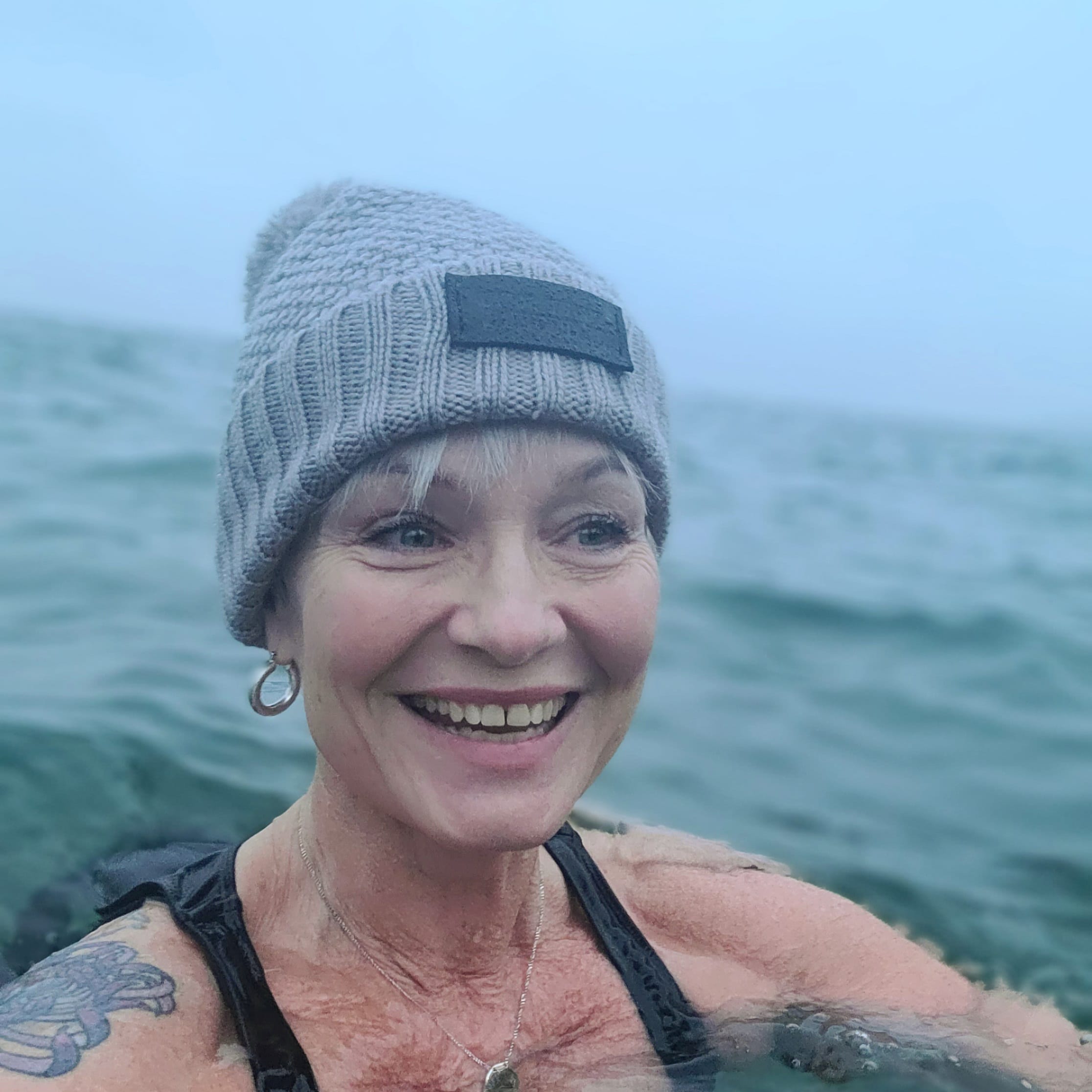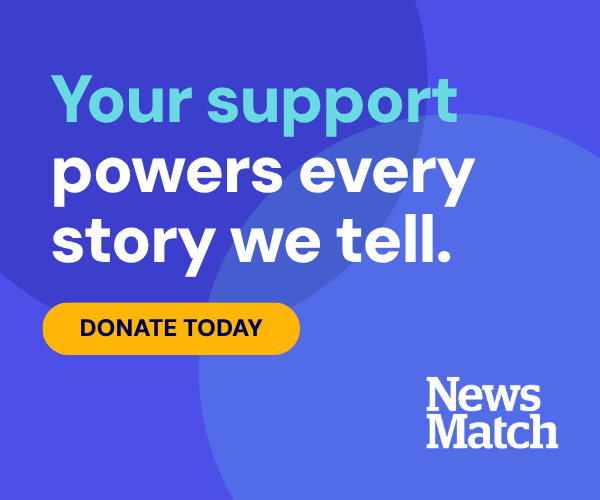Community Health & Wellness
Cold plunging advocate says the water’s just fine, even in winter
Renate Rain started cold plunging years ago. Cold plunging differs from polar plunging (also called “polar bear plunging”). Where the latter is often a yearly communal challenge-like event, the former is an intentional practice that a person engages in at regular intervals, often outdoors in a natural body of water, if possible.
Health & Wellness Sponsor
Health and Wellness stories are made possible in part by Virginia Mason Franciscan Health, a proud sponsor of Gig Harbor Now.
After learning cold plunging may have therapeutic benefits, Rain first started the practice to help alleviate her chronic pain and depression. But as the years went on, Rain found herself leading more and more people in cold plunges to help them with their challenges — and before she knew it, in 2021, the first year after the COVID-19 pandemic started, a growing community had formed around the cold waters of the Pacific Northwest.
Rain and the other plungers also found something else healed within themselves: Their relationship with the rest of the natural world. Rain spoke with Gig Harbor Now’s Carolyn Bick about how cold plunging fundamentally changed her relationship with other animals and the water.

Renate Rain
Gig Harbor Now Tell me about the cold plunging groups here. When did all of this start, and what is it like?
Renate Rain: (After I started plunging,) people I didn’t know were seeing my (social media) posts, because I leave everything in public. I’ve helped people with weight loss and grief, and I’m very open on social media, and so people were seeing my posts. Not many people were cold plunging in the Pacific Northwest at the time. There were groups of people, and I’ve met a lot of them since. They were saying, “I tried to get people to come, but they wouldn’t come.”
So, I said, “If anyone wants to go, I’ll go with you.” All of my friends and family were like, “No, absolutely not.”
But the people that were seeing the posts started saying, “I want to try this.”
I was meeting people almost every day, and it got to be too much. So, I just set up a day and a time. I opened it starting with Instagram. A friend of mine helped me with the name — “Puget Sound Plungers.” It was super clever, I thought.
I said, “I’ll be here Sunday at sunrise if anyone wants to come. I think eight or 10 people came.
I was blown away. And then I realized, “I actually have to be here.”
In the beginning, everyone was nervous. Everyone was scared. Now they come with groups, because it’s so much more mainstream. At the time, it was not. I even had someone come once and say, “Are you okay?” Like — mental health — “Are you okay?”
Halloween (2021), was the first community plunge. It was a terrible day to start. Every year, I want to do the anniversary, (but people have trick-or-treating with their) kids. It was sunrise, too, in the beginning, it was always sunrise. (Sunrise) was different every week.
Then I realized it’s easier for people to just count on (a regular time).
We have regulars. They’re not the same regulars. There are … maybe five different groups that go in. It’s a common occurrence. It’s not so weird anymore.
We have groups, friend groups that have bonded so tightly. People ask me, “Why do you think that is?”
I think they came down scared. You could see it in their face, when they came down — terrified.
It took off their clothes. They did a hard thing together.
You get dopamine and norepinephrine, when you cold plunge. When you do it in community, you also get oxytocin. You’re just bonding. Now, people come down with their whole friend group. Or their family.
GHN: Did cold plunging get you to start thinking differently about your place in nature?
Rain: It did. A lot.
In the beginning, (plunging and the animals) scared me. I’ve been here 50-something years. I had never swam in the Puget Sound. I had only been to Sunnyside (Beach Park in Steilacoom) once. It was for paddle boarding, and the whole time I was miserable. I thought I would die, and there were jellyfish everywhere. The whole time I was like, “I’m basically in hell.”
This is going to make me not seem very intelligent, but I don’t think I realized — I’m sure I knew, somewhere — but I didn’t realize that the sunrise is different every day (until I started cold plunging). It’s earlier in the summer, it’s later in the winter. But it’s literally changing every day. I’m sure I learned that in some science class.
But it wasn’t an awareness that I had. I also don’t believe that I watched the sunrise intentionally, unless I was on vacation.
My first whole first year of cold plunging, I went to the beach every day at sunrise. That was getting up at 4 o’clock some days. It was very important to me. And the first year, I also did one or two days a week at sunset. Sunset at Sunnyside (Beach) is the most amazing place to be.
I would tell people, “We’re not witnessing. We’re participating. We’re in the water, witnessing.” Being in the water, when the sun is going down — you literally watch it.
You’re participating. The animals show up. We have harbor seals, and sometimes sea lions. At two of the beaches, there’s always a crane.
Our first Christmas, we got a gift. There were about 20-something of us. It was very cold, and it was all new still. And the porpoises came. Now, I did not know they come all the time. I didn’t know we had porpoises in the Sound.
There have been a few days, only a few, where I couldn’t get in the water. It was too rough. And Sunnyside’s a very calm beach. And I’ve just learned this acceptance. I’ve always been high-strung. I’ve always been anxious. In fact, my depression and anxiety were very closely — I couldn’t talk to you before I started cold plunging. I couldn’t talk to groups, certainly, before I started cold plunging. And my nervous system was shocked. I’m a much different person. Much different person. And so I learned when to trust myself — “I can go through that.”
But the nature aspect was huge, because it doesn’t bother me now [to have my plans upset]. When it’s raining or stormy, even when I couldn’t get in the water, it’s like, “Oh, it’s going to be different tomorrow.” I’ve gotten this real, true sense of, “Everything is temporary,” which I’ve always known. A lot of people have died around me, so I’ve always known that it’s temporary — but also, the temporary is beautiful.
The ugly days are really pretty. The dark. And people are like, “Oh, it’s so gray.” And I’m like, “Yeah, it’s so beautiful.”
I also didn’t know the Olympic (Mountains) were there! And then they came out in the spring, and I was like, “Were they always there?” I didn’t know because I didn’t go to that beach.
Now, that beach is magical to me. The crabs come out. There’s a kind of crab there, the big crabs, they’re not Dungeness, but they’re like that.
Then there’s these spindly — I think we call them spider crabs. I don’t know what they are.
If you nudge them or get near them, they stand up and come at you. And we’re laughing about them. We have our harbor seals. We have all this nature.
Once in a while, the sea lions at Owens Beach (in Tacoma), they act in a way that I’m like, “Get out of the water. Today, they don’t want us here.” We’ve had those experiences where maybe they’re hunting or whatever, and they’re shouting at us because the harbor seals don’t, and the sea lions do. (To the other plungers,) I’m like, “You guys, are you not reading the room? This (beach) is out.”
(After we had started meeting regularly,) we started paddling and plunging. If you go out at sunrise and you’re quiet, the porpoises will come around and breathe so loud. It’s literally magic. They’ve always been there
I also learned that the orcas are not even whales. All of these things I’m learning in my 50s, all because of the water.
I’m more gentle with the weather, with Mother Nature. I didn’t get bothered by the rain a lot, as far as complaining.
That just doesn’t seem like a very good use of my time. But now I’m more appreciative of it, if that even makes sense. Then I can go to the water and be still, no matter what the water is doing.
GHN: Do you have a ritual of thanks or something similar to the water that you do before or after cold plunging?
Rain: Alone, in the beginning, I (would throw in) a rock. We’ve done it with groups, where we all throw the rock and you see all the ripples go out to each other.
We sing to the water. There’s the grandmothers from a tribe in Canada who’ve asked that we all sing (The Water Song) to the water. It’s beautiful.
We sing it, call and response. You sing it facing all four directions. And it’s basically — the water is the lifeblood. They’ve asked that we share this far and wide.
And I do it here, even in my tank. And the water reacts every time. It reacts. It literally reacts every time.
I have so much gratitude. What a lot of people struggle with when they hear my story — because both of my husbands drowned — is that I’m into the water.
I don’t blame the water. I’ve always loved the water and I have this level of appreciation now. The water makes me calm. It’s the only place I find true quiet and peace. And so I sneak away during plunges a lot, because I plunge with so many people. I definitely have a ritual of gratitude and calm when I’m in the water by myself.
GHN: What kinds of things do you see happening with other cold plungers, in regards to their relationship with the rest of the natural world?
Rain: People are walking in nature. We have a whole hiking group that’s taken off, and a whole paddling boarding group.
When we started the paddle and plunge group, two or three people had paddle boards. And that first year, 15 people got paddle boards. They go out at sunrise — that’s four in the morning in the summer! And they’re still talking about doing it in the winter, just to be on the water.
They fall in love with the water. They fall in love with nature. They start hiking. They never hiked. Most of these are middle-aged women. They find out they can do things they thought was outside of their reach. They didn’t think they could start hiking with three kids and a body that’s not in shape. Or not thin. Or doesn’t have muscles that they can see. They thought, “My time has passed.” And by coming to the water and learning, [that becomes], “I can do this.”
Some of them have gone out of the state and gone on trips and done hikes.
I love that everyone still gets excited when there’s an animal in the water, even though we’re all terrified of the animals in the water. The first time, people are like, “There’s an animal in the water!”
Some people are so landlocked that that makes them want to get out. And I’m like, “They were always here. They’re always here.”


